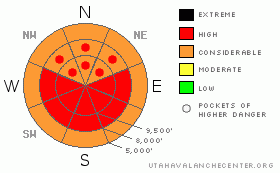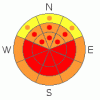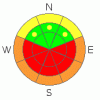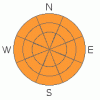|
Rescue teams in the La Sals are looking for a missing snowmobiler buried in a significant avalanche debris pile. You can check the updated Accident Report in progress here and all the individual reports of avalanches here.
Other naturals from two days ago have been reported in the Finger's area above Sundance. This over and above the remote in Trailer Court also from two days ago. See Trailer court ob in Current conditions for more info.
In the Central Wasatch, numerous human triggered avalanches filtered in – one near Mt. Aire that snapped trees in the runout 1200’ below, one with control work in the mid-canyon that left a debris pile 6’ deep and 60’ wide on Little Cottonwood road, one that reportedly resulted a full burial and live recovery in Porter Fork of Mill Creek. The details –
· Lambs Canyon – a ski cut released a 2-3’ deep and 300’ wide avalanche on a northeast facing slope at 8200’.
· Reynolds East face shoulder - A snowboarder descending the ridge remotely triggered a 2-3’ deep and 300’ wide avalanche there at 9300’ on the east-southeast face.
· Mineral Fork of BCC – a skier descending a steep west facing slope at 8500’ between Kessler and East Mineral remotely triggered a 2-3’ deep and 125’ wide avalanche.
· West Willow Heights – either natural, cornice, or remotely triggered slide pulled out a slab estimated at 3-5’ deep and upwards of 1000’ wide on a steep east to northeast facing slope at 9600’.
· West Porter of Mill Creek – likely remotely triggered slide on the headwall pulling out 2-3’ deep and 300’ wide in the steep northeast facing headwall. Overran the skin track.
· Porter Fork of Mill Creek – sketchy details of a full burial and live recovery.
· Mt Aire – a cornice drop remotely triggered a 3’ deep and 75’ wide avalanche, snapping 6” dbh trees 1200’ below. It was on a steep east facing slope at 8500’.
· Brighton Backcountry above Lake Mary – ski cut pulls out a 2’ deep 50’ wide slide on a northeast facing slope above 10k.
· West Monitor – few details on a slide in the bowl – west facing at 9500’ 2’ deep and 100’ wide.
Reynolds pic (Clarke photo below)
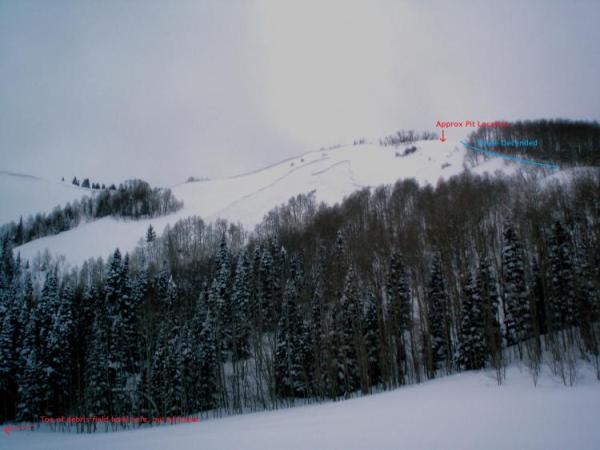
Mineral slide (Adler photo) below

|

